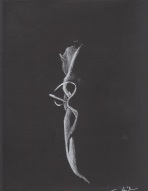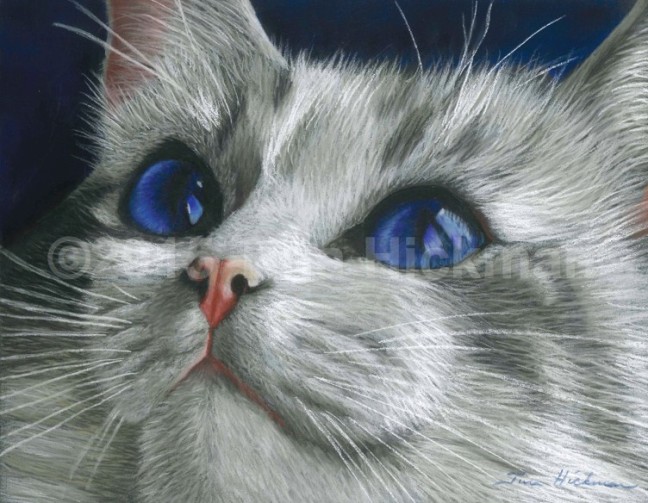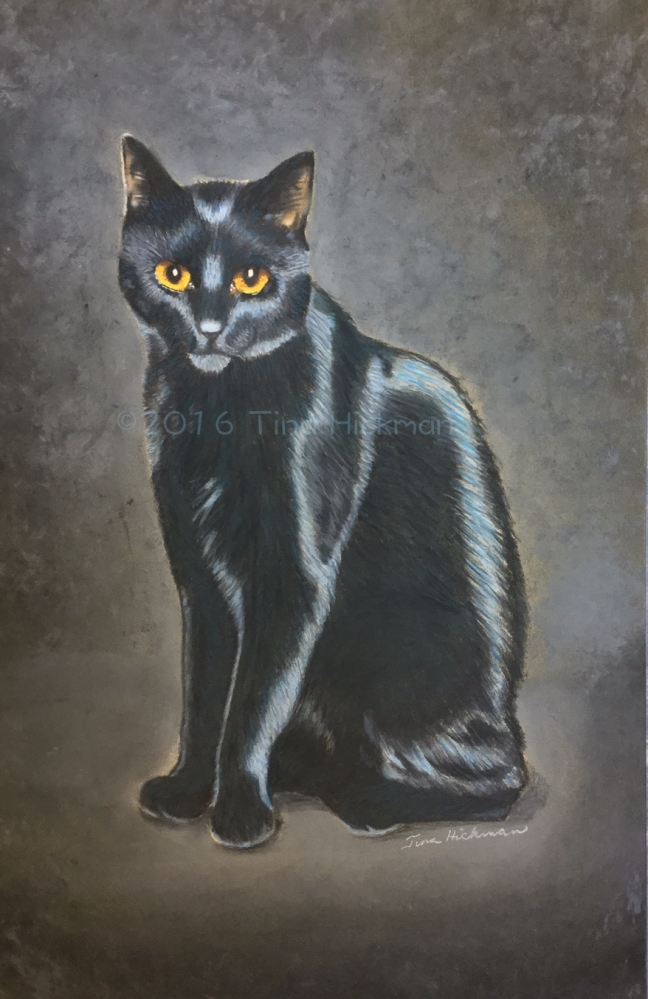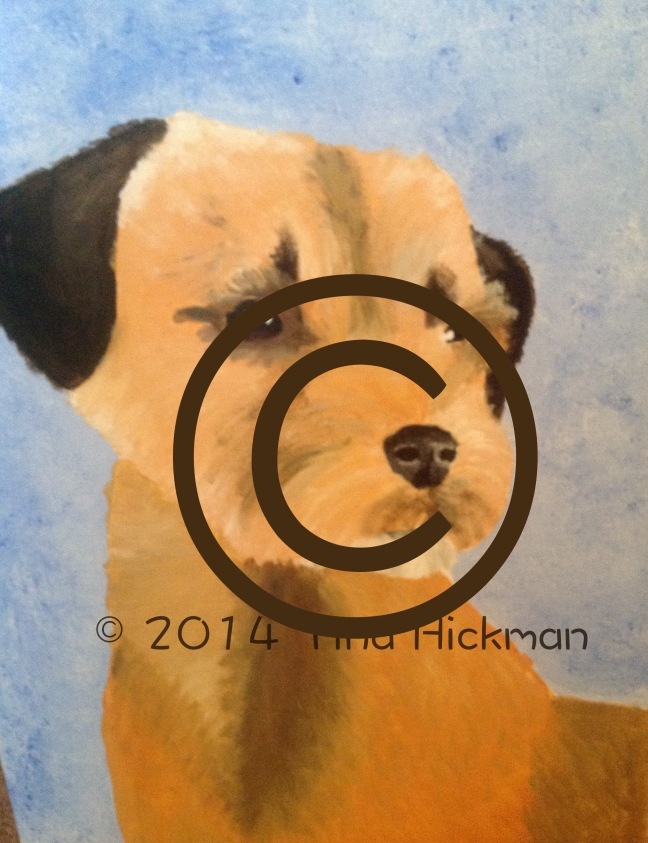Ahhh, the beautiful Snowdrop. I ought to just rename the drawing, “The Beautiful Snowdrop”, for that is how I think of it.
Snowdrop is a purebred ragdoll cat owned by Louise Marie Stevenson in Britain. Before I drew that piece, I hadn’t drawn a cat for a while, and I was thinking it was about time I did. I knew just what I wanted… a white cat looking up and into the distance, 3/4 view, big eyes with reflections for me to draw. I searched through the photos in all the copyright free photo groups I belong to, but nothing was what I wanted. I found white cats, but nothing that particularly struck me. I may have found cats in the pose I wanted, but if I did, they didn’t capture my attention, because I was on a mission to draw a white cat. So week after week, for two or four months, I drew other things.
One of the Facebook groups I belong to is called “Artists and Cats”. It’s a group for cat lovers to post cat photos or art to share with other cat lovers. It was started by a Facebook friend of mine, Carol Foerster, and I enjoyed looking at the photos people would post. Imagine my surprise when someone posted a photo exactly as I had pictured it, along with PERMISSION for any artists who cared to draw or paint it!!! I couldn’t believe my luck!
Of course, I got right on that. But when I was faced with the prospect of actually drawing, I realized I didn’t want to draw it. Even though it was the perfect photo, I found I was bored with half of it before I even started. The more I contemplated drawing it, the more I inwardly groaned at the concept. But it was the perfect photo for what I wanted. What was the problem? It was then that I asked myself a question I’d never asked myself before.
“What is important?”
The photo was of only the front half of the cat. It included her head, chest, and one front leg stretched out in front of her. I realized I didn’t care about her chest or leg. I wanted the whole cat or, really, just the head. So I began cropping. By the time I was done, I found that Snowdrop had lost the top of one ear and the majority of the other. Even her chin was cut off a bit. For perhaps the first time in my adult life, I seriously cropped a photo before drawing it. I zoomed in on the features which had attracted me to the photo in the first place. I’m sure this is something most artists do all the time, but I have always been a slave to the photograph, reproducing it as faithfully as I could (except perhaps for simplifying backgrounds).
Snowdrop’s eyes really are blue. I realized they needed to be toned down a little, and I tried, but my pencils really wanted her eyes to be the deep blue they ended up being on my paper. So I gave up when I realized I just kept making them bluer again. So when people ask, “Are her eyes really that blue?” the answer is, “Not quite, but in my mind they are.” Also, I see I focused on the one part of her body with the most non-white color. Oh well. The point was, she appeared at a time when I needed her, and she was perfect for my needs. To this day, of all my drawings, Snowdrop gets the most attention.
The photograph got a lot of attention when it was posted. I saw two other versions of it that other artists had painted. Maybe I’m biased, but I like mine best. 😉
Prints are available for purchase.



